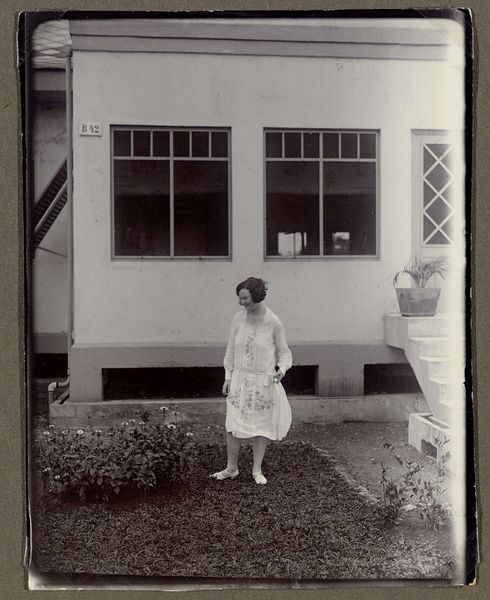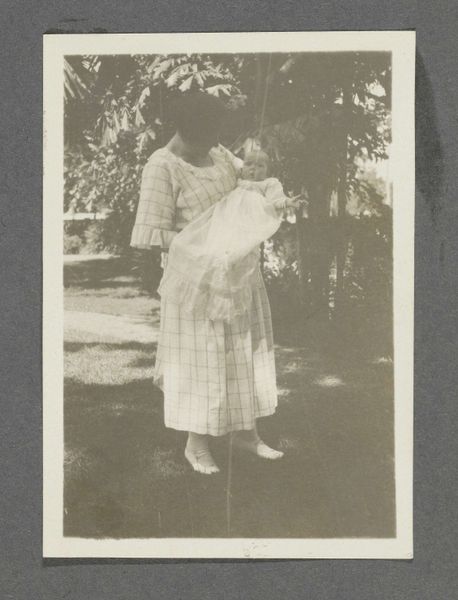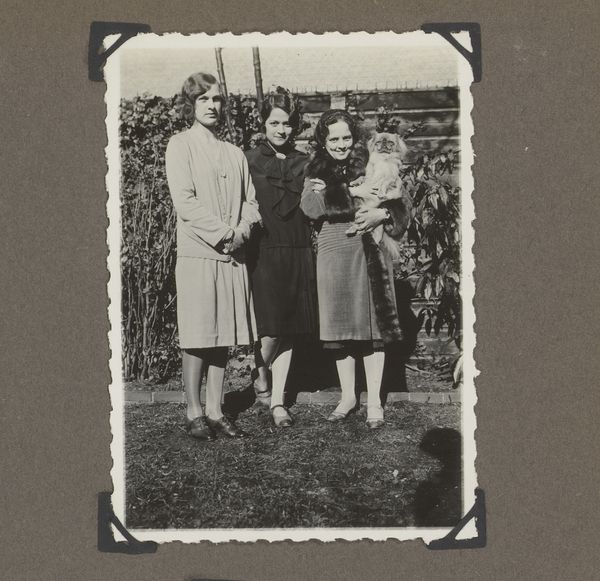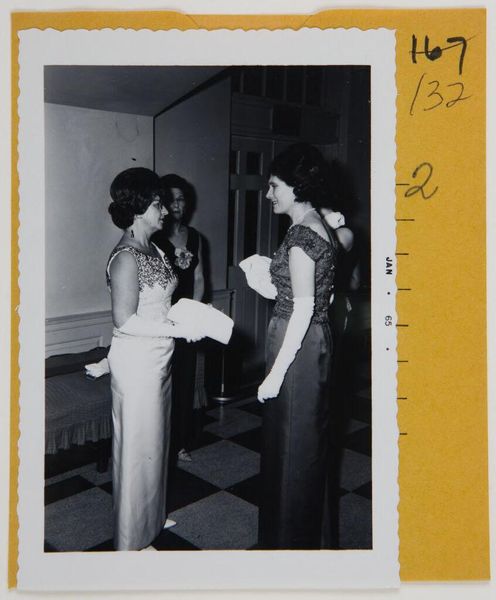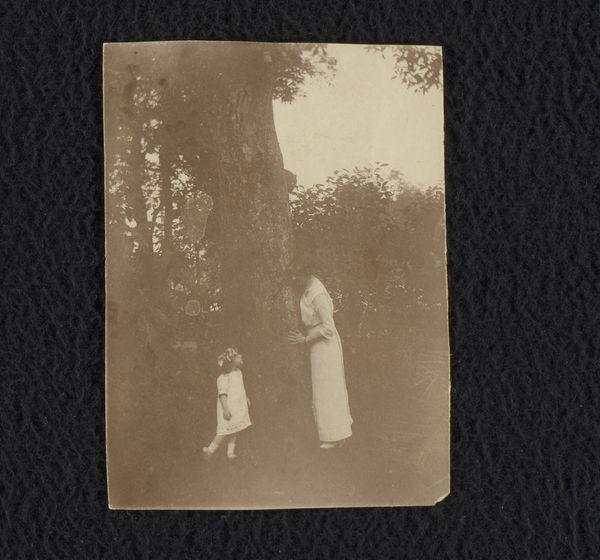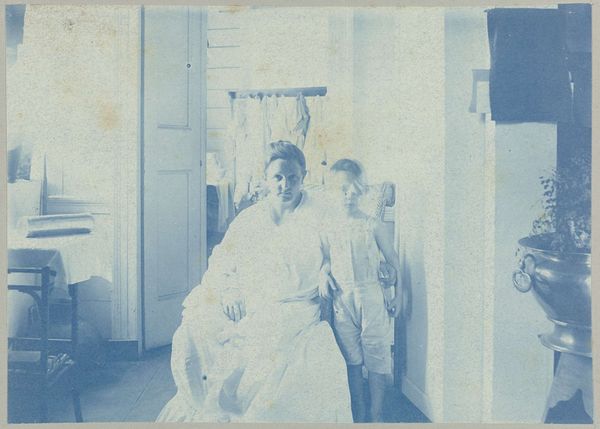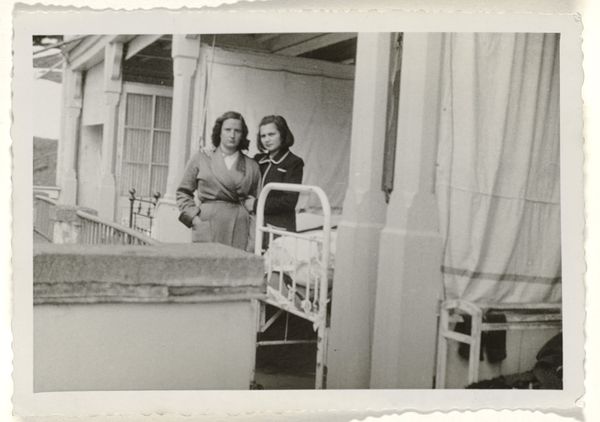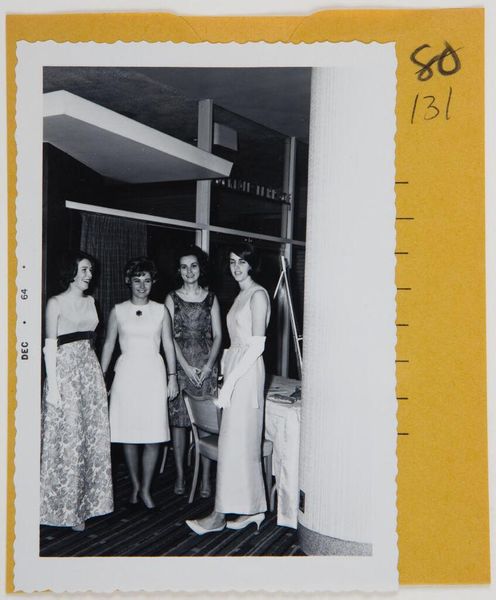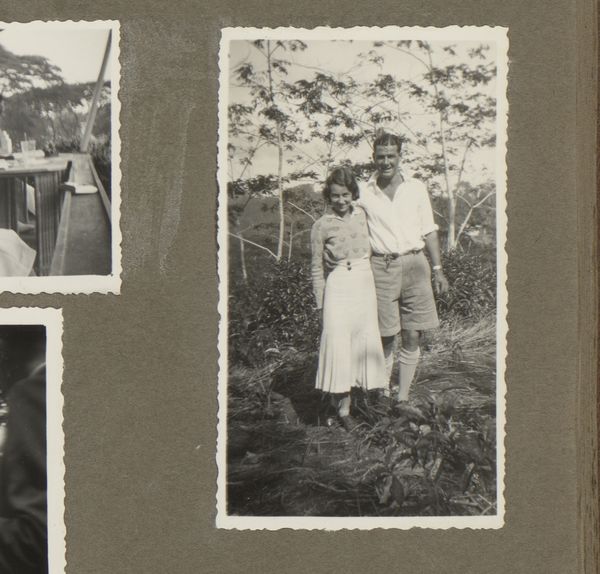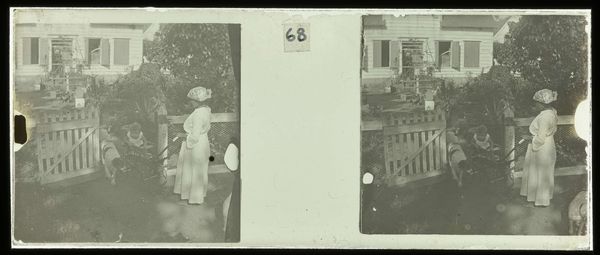
Dimensions: height 62 mm, width 69 mm
Copyright: Rijks Museum: Open Domain
Editor: Here we have a gelatin silver print from 1911-1912, titled "Maria Gonggrijp met kind en kinderverzorgster," which translates to Maria Gonggrijp with child and nanny. It feels like a captured moment, very posed, but it gives me an interesting look at domestic life back then. What catches your eye in this image? Curator: I immediately consider the materials. Gelatin silver prints allowed for mass production of images. Think about what it meant to capture and disseminate an image like this one – the social implications are immense. Who had access to this technology and how did they use it? Editor: That's interesting. So the photographic process itself becomes part of the story? Curator: Absolutely. Look at the power dynamics displayed. The photograph itself, as a mass-produced object, becomes part of that display of power. Whose gaze is privileged here? Editor: I see what you mean. The photograph itself is a commodity, contributing to the social narrative, it emphasizes their different roles within the domestic sphere. So, beyond the scene depicted, the *making* of this photo also highlights social dynamics. Curator: Precisely! We can discuss at length, even now, what materials are appropriate in the visual arts. In the early 20th century the question was often not asked at all! Why? Because someone got to decide and they benefited. Editor: That completely reframes how I see this piece. Thinking about it less as a sentimental portrait and more as a material object embedded within a specific socio-economic context, showing those in power in a staged photograph with servants. Thanks for sharing this. Curator: My pleasure! It highlights the fact that no artwork is created in a vacuum. There's a history to everything.
Comments
No comments
Be the first to comment and join the conversation on the ultimate creative platform.
